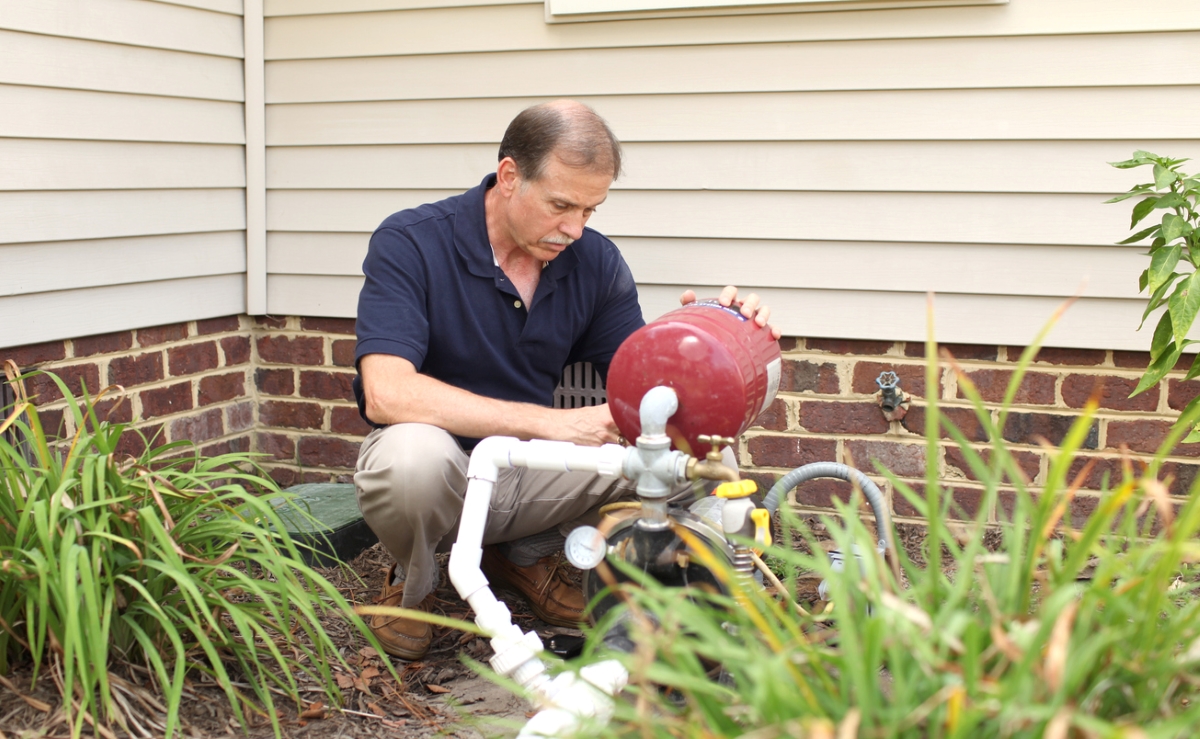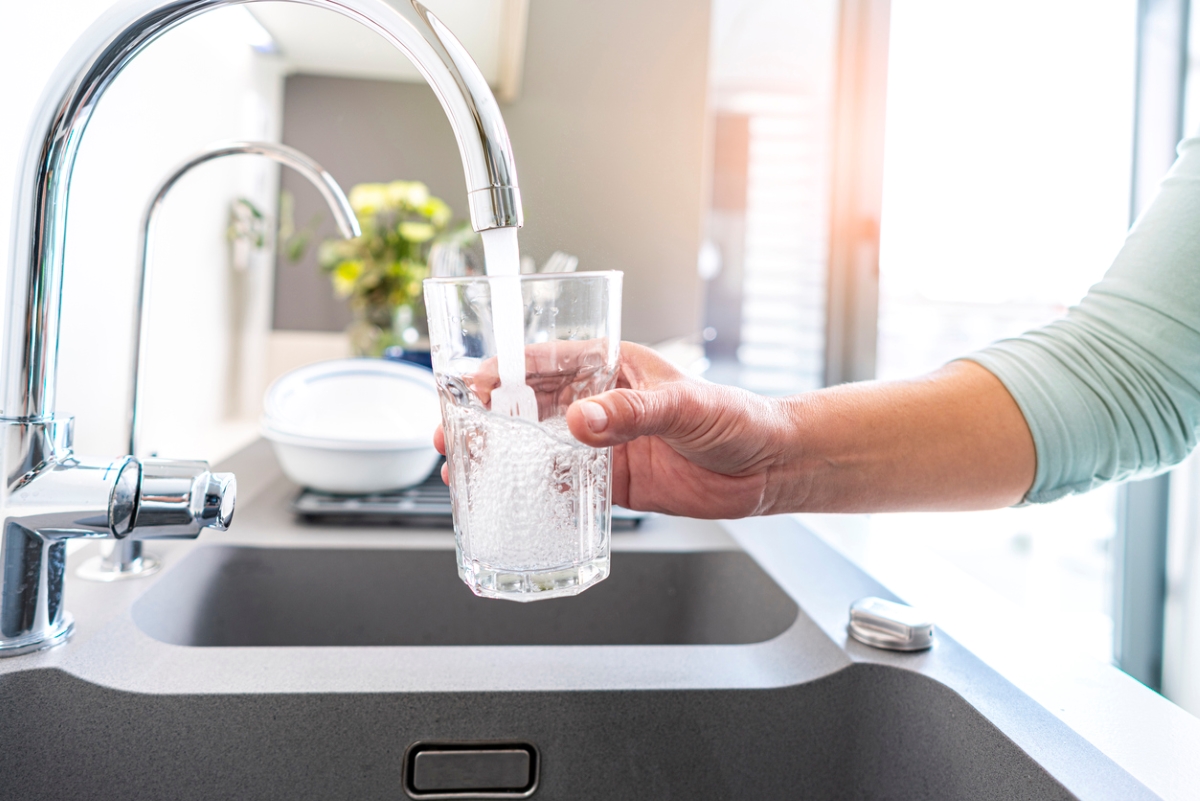We may earn revenue from the products available on this page and participate in affiliate programs. Learn More ›
Mní wičhóni, as the Lakota say: Water is life. Access to potable water for residential use is essential. Only about 13 million people get their water from a well in the U.S., as compared to 280 million who rely on city water. Although not everyone has a choice of where their water comes from, it’s still wise to understand the differences between well water vs. city water.
The primary difference between well water and city water is its source, but treatment of the water also constitutes a significant dissimilarity. Having a private well vs. public water may also impact a home’s value and resale potential—more good reasons to understand the differences between well water vs. public water.
Both city water and private wells supply an important natural resource to households.
As the term implies, well water is sourced from natural underground aquifers through a private residential water well that is drilled deep enough to reach bedrock. From there, water is pumped to the surface for residential use. Instead of being chemically treated, well water is naturally filtered by the rock and soil it moves through.
City water is commonly acquired from rivers, lakes, or reservoirs. After being treated at a municipal treatment plant to remove impurities, it is piped to individual residences and businesses. Many municipalities add chlorine, chloramines, or ammonia to kill bacteria, coliform, and E. coli, as well as fluoride to fight tooth decay.
Considered “purer” because it’s not chemically treated, water from home wells may contain minerals such as iron or manganese, which results in a noticeable taste difference between well water vs. tap water; these minerals can cause staining.
Well water is generally considered more eco-friendly because it isn’t chemically treated and doesn’t require energy for distribution. “Well water can be better than city water,” says Chris Gordon, sales manager and former technician for The Water Specialist in Hillsboro, North Carolina. “It may even be safer than city water because it doesn’t have chemicals added for treatment.” That said, well water still requires frequent testing, filtering, and sometimes chemical treatments similar to those used to purify city water. More on that later.
RELATED: Boil Water Advisory 101: How to Safely Sanitize Water at Home During an Emergency
Well water is considered more affordable than city water.

A familiar adage in the water industry holds that the water is free; it’s just the delivery that folks pay for. That applies to water wells and city water alike. There may be no monthly bill for well water, but there’s an additional electrical cost for pumping it. And there are other costs associated with a home well, from the one-time cost of drilling and outfitting a new one to maintaining an existing one to treating the water.
Gordon estimates the cost of digging a well between $5,000 and $15,000, but it could be higher if drilling must go deeper than 400 feet. A whole-house water filtration system can cost between $1,00 and $4,000. Inspections typically run $250 to $550.
It may seem like there are more costs involved with a well as opposed to getting water from a municipal source. But Gordon says if the cost of buying a new pump, tank, and the electrical component, amortized over a life expectancy of 40 years, equals about $40 per month, it compares favorably with the average monthly municipal water bill of just over $45, per Statista, or as much as $1,000 per year, according to the EPA.
Homeowners are responsible for well water quality, whereas city water is regulated by the government.
One potential advantage of city water is that the city is responsible for managing water quality. However, in some areas (such as Pittsboro, N.C.), Gordon says the municipalities don’t do enough to filter microplastics, so it’s up to the consumer to purchase a water filtration system or a reverse osmosis system to filter out microplastics, chloramines, and chlorine. Homeowners can be proactive about their water safety through testing, treatment, and maintenance.
Testing

The EPA does not regulate well water; however, Gordon says, the agency does recommend annual testing. “The five things I test for onsite are iron, manganese, pH, hardness, and sulfur,” Gordon says. Additional issues commonly tested for include E. coli and coliform bacteria.
Most counties can do the job, but a private lab can usually do the job more quickly, for a price. Test kits can be purchased as a DIY testing option, but homeowners will still have to wait for lab results.
RELATED: The Best Water Test Kits, Reviewed
Treatment
Homeowners who use a well for water supply may need to treat it occasionally—particularly if it’s an older well. “Older wells are shallower,” Gordon explains. As such, they rely on surface water rather than water from the aquifer. Surface water is more easily contaminated and, thus, may need more frequent treatment.
Treatment depends on the issue. “Shocking” a well is a process that can rid water of E. coli and coliform bacteria, Gordon says. Just as municipalities use chlorine, shocking a well involves chlorination as a sort of “water well cleaner” to kill bacterial contamination. If that’s unsuccessful, Gordon recommends a UV light.
Maintenance

Maintenance depends on the water quality, Gordon says. He suggests changing the sediment filter to improve water quality and reminds that water quality testing is a must.
Annual well maintenance should include water testing, a flow test to determine output, water level check, pump motor performance and electrical check, valve inspection, and a check of the pressure tank and pressure switch contact. The well cap should be intact and the top of the well should be a foot above the ground and the proper distance from the house and septic drain field. Hazardous materials should never be stored near the well.
Home wells and municipal water supplies are both susceptible to unexpected outages.
Both sources of potable water are susceptible to unplanned-for outages. Any time the power goes out, water cannot be retrieved from a well because a well pump runs on electricity.
Perhaps one of the most common causes for unexpected outages of city water is a water main break. This could be the result of freeze-thaw cycles, damage done during construction, damage done by severe weather (such as hurricanes and floods), or aging and/or corroded infrastructure.
Tree roots can also damage pipes of either system, interrupting service. Corrosion, age, and construction can also damage a home well.
RELATED: 7 Common Water Problems—and Their Cures
Whether a home has well water vs. city water can impact resale value.
Some experts believe that a well goes hand-in-hand with higher resale value. This may largely be due to the fact that most municipalities have minimum land size requirements for a well and septic system. More property typically comes at a higher price. Some home buyers prefer side-stepping the monthly bill and the chemical treatment that comes with city water. Some consider well water cleaner and fresher. The bottom line: If the property has a well-maintained well with quality water, it may increase the home’s value.


